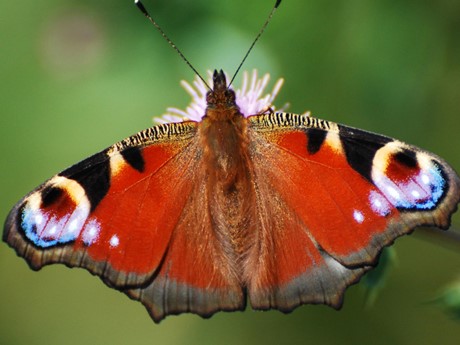Nature's Calendar and the State of the UK Climate
Fritha West, 22/08/2022
Every year, Nature’s Calendar contributes to the State of the UK Climate report which is collated by the Met Office. This report sums up climate trends and major weather events throughout the previous year.
Using Nature’s Calendar records sent in by members of the public, we evaluate the impact of climate change on wildlife by examining the timing of natural events for selected species. These findings are analysed by Professor Tim Sparks and used to create the phenology section of the State of UK Climate report.
Our contribution to the report focuses on four species: hawthorn, elder, oak and silver birch. These trees have been selected to cover early leafing (hawthorn and elder) and later leafing (silver birch and oak).

Elder, an early leafing species. Photo: WTML

Predunculate oak, a late leafing species. Photo: WTML
Findings
2021 was the 18th warmest year on record, with Northern Ireland seeing a new record temperature of 31.3°C. It might seem unremarkable compared to recent years, but that just goes to illustrate how our definition of "normal" is changing when it comes to the climate.
The report also explains that February 2021 saw the most severe spell of winter weather since the 'Beast from the East' in February 2018. Sea levels around the UK have risen by around 16.5cm since the 1990s - close to the global estimate of a 3.2mm rise per year. And lastly, Storm Arwen brought strong and damaging northerly winds to the north of the UK in November, but 2021 was less stormy than the average for the last few decades.
Read more about how the UK's climate is being affected in the 2021 State of UK Climate here.
What did Nature’s Calendar tell us?
By using Nature's Calendar records, the authors determined that first leaf dates for hawthorn and elder were earlier than average, but a chilly April delayed later leafing species, including oak and silver birch. As a whole, the 2021 leaf season was between 1-7 days longer than average. Prof Tim Sparks explained that a "split spring" such as this can cause problems for species that come out early in the warm March weather, only to struggle when it turns cold again.

Would you like to contribute to the next State of UK Climate report?
Did you record leafing on Nature’s Calendar this spring? If so, thank you! The data you contributed will be used in the 2022 analysis of the UK climate. But if you missed your chance earlier in the year, don’t worry.
Spring tells us a lot about the climate, but autumn is just as important. This year, you can help us record a variety of seasonal events, from fruit ripening to leaf tinting and leaf drop. Recent heatwaves may have encouraged some autumn events to happen much earlier than usual – so please do keep an eye out in your local area! Remember, these records may be used for internationally important research like the State of UK Climate report, so your observations can make a huge difference.

